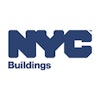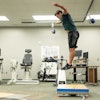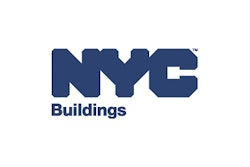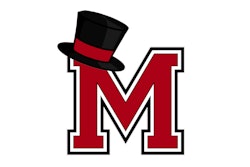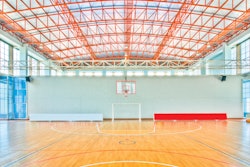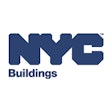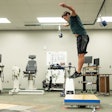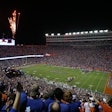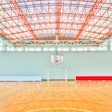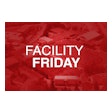Boston-area school fitness centers open doors for both students and local residents.
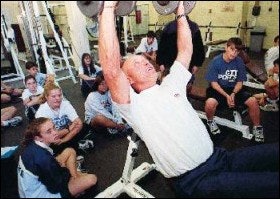
Nancy O'Neil doesn't mind taking credit for the fitness and wellness revival that appears to be happening in a small pocket of Boston-area communities. "I'd like to say that we really kicked things off around here," says the athletic director at Lincoln- Sudbury High School, which five years ago converted a large and unused vocational education teaching space into a two-story fitness and wellness center open to students, staff and area residents. "But this isn't just about us and our kids. It's about all kids in all schools."
Perhaps that line of thinking is the reason why at least a half-dozen high schools within about a 40-mile radius are getting serious about fighting the threat of obesity in adolescents while also strengthening both student-athletes and community relations. Schools large and small are helping make kids healthier and happier with updated physical education curricula and free after-school access to some of the best cardiovascular and strength-training equipment available. The facilities also are open in the early mornings and evenings to local residents and alumni who might not need a sauna and juice bar-typical private health club frills-to punctuate their workouts. Nominal user fees help pay for staffing the centers during nonschool hours, as well as fund other school needs.
Many of these facilities - ranging from converted classrooms to new million-dollar gymnasiums - were built using donated funds, grants and loans, rather than taxpayer dollars. "It's a shame to just use the facility during the day and close it down at night," says Richard Garabedian, director of health, physical education and athletics at Watertown High School, where a new 5,000-squarefoot fitness and wellness center is expected to open this month. "Why not make it available to anyone? It should be a focal point of the town."
In Watertown's case, the facility - located in a space converted from unused locker rooms in the school's lower level-developed out of a desire to make the school's athletic teams more competitive. Watertown was the only school in the 10-school Middlesex League that didn't provide its student athletes a weight room, Garabedian says.
For years, team members worked out at a city-owned facility near the school. Later, training equipment was moved to a basement area of the school and finally into one of the school's storage garages. Plus, he adds, fitness components were "sorely lacking" in the school's physical education curriculum. The new facility will feature several pieces of cardio equipment, free weights and circuit machines that will become part of the school's fitness training and testing programs for all students.
"We need to get stronger," Garabedian says. "Our kids are not strong enough when competing with the rest of the league. So this will help."
"When I played high school hockey in the 1960s, no one lifted weights," says Art Venezia, a former Watertown hockey coach and treasurer of the Watertown Boosters Association, the group overseeing the new center. "If we could benchpress 75 pounds, we thought we were great. Right now, to compete, our student- athletes need this facility."
Apparently, so do town residents. In November, two months before the center was slated to open, more than 100 people had registered for memberships. Venezia says he hopes to attract up to 400 members, even though he doesn't expect more than 30 or 40 of them to use exercise programs for seniors are in the works, and separate locker rooms and showers will be available to the public. While the school's population will enjoy exclusive use of the center from 7:30 a.m. to 5 p.m. on weekdays, it will be open to the town's population from 5:30 to 7:30 a.m. and from 5 to 9 p.m. on weekdays, and from 8 a.m. to 1 p.m. on weekends. Annual membership fees will likely be in the $150 range-about a third of what area health clubs are charging. But so far, no for-profit fitness centers have balked at Watertown's plan. "Our facility is going to be so small by comparison, and we're not out here to take away their memberships," Venezia says. "That's just not going to happen. I'm sure they're not worried about us."
Renovation of the locker rooms - along with the purchase of equipment, electrical and plumbing work, and amenities-is expected to run the school about $275,000. More than half the money came from fund-raisers and donations (the rest took the form of a bank loan, Venezia says), and local businesses offered deep discounts on contract services and used equipment.
In fact, the three-year project was progressing so smoothly toward completion that Venezia's biggest concern late last year was how much additional on-street parking the new facility would generate. Right now, O'Neil can only hope for such a dilemma. Despite the best efforts of the school's adult-education program, she says, Lincoln-Sudbury's five-year-old fitness center has yet to attract large crowds from the communities it represents. As one Sudbury resident recently told the Boston Globe, "I'm not sure a whole lot of people know about it."
Spreading the word that your school has a low-key but high-quality and affordable fitness facility is one of the secrets to success-a lesson Lincoln-Sudbury officials learned the hard way. "We're not looking to make money, but we don't want to lose money, either," O'Neil says, adding that users pay a registration fee of $75 and then either prorated fees of $60 to $270 or a series of pay-as-you-go fees. "We don't have all the amenities - nice locker rooms or steam rooms. But if you don't mind the bare-bones atmosphere and just want to work out, it's a great deal."
"We get people who are more interested in feeling comfortable around the other people who are there," adds Linda Hawes, coordinator of the school's adulteducation program and a member of the fitness center, who notes women don't have to wear a thong to feel accepted by fellow users.
The $180,000 center's 2,300-squarefoot main level is packed with free weights and circuit weights, and surrounded by a long and narrow balcony housing several pieces of cardio equipment. The facility is open to the school's population and athletic teams from 3 to 5 p.m., and to the public from 6:30 to 8:30 p.m., Monday through Thursday, and from 9 a.m. to noon on Saturday. Students who wish to work out during the summer pay a $75 user fee.
Two personal trainers from a nearby club help community members develop their own fitness routines, while the school's instructors work with students-after school and in courses such as "Introduction to Muscular Fitness"-to help them design their own programs. "We're teaching young kids what types of equipment are out there, what's right for them and how to shop for a club after they graduate," O'Neil says. "We want to empower them."
Even though the fitness facilities at Lincoln-Sudbury, Watertown and a handful of other area schools also strive to empower community members with different services and equipment - Nipmuc High School in Upton, for example, offers massage therapy at its center-their purpose, first and foremost, is to serve students by helping improve their health and knowledge of physical fitness. "It's the place to be for students," O'Neil says about Lincoln- Sudbury's center. "A lot of kids enjoy being there after school and working out. It's allowing them to go though their lives with vim, vigor and confidence."











